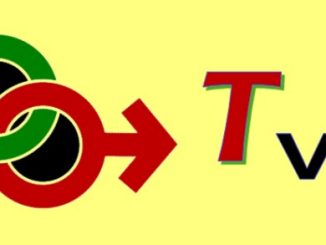
High Tech Gender Gap, Gender Inequality and Personality Differences
Former Google employee James Damore published a internal paper whose contents cited a number of gender differences accepted in some of the research communities of personality psychology and neuro-psychology (see citations at the end of this article). His memo floated around Google for about a month with some lively exchanges among employees – both pro and con. However once HR and upper management got wind of it Damore’s employment with Google was terminated – – – apparently due to perpetuating gender stereotypes.
Given the flap caused by Damore’s dismissal and the subsequent attention given this subject on YouTube and elsewhere, I thought it would be interesting to look at what research exists on gender differences and personality type.
One of the reasons Damore got into hot water was he cited “average” personality preference differences between the genders and then his subsequent comments and recommendations were seen as talking about all or most women. This happened despite in his paper Damore indicated while there are some clear differences between men and women (on average) there is also considerable overlap between the sexes. Some women’s brains and personality are quite similar to those of men and visa-versa. Damore clearly made this point in his paper, but unfortunately Google and subsequent detractors look past this fact.
Damore’s paper was read in its entirety by psychologist Jordan Peterson and subsequently interviewed Damore. Peterson believed Damore’s assertions and conclusions were well-supported by psychological research. Peterson’s interview appears on YouTube (see the link at the end of this article) and he cites numerous sources that support Damore in the YouTube description.
While not cited by Peterson, research data in the field of Myers-Briggs Personality Type also show some clear differences among the genders in some key components of personality type.
Looking at Gender Differences in Personality Type
Whereas conventional psychology talks about normal personality differences from the standpoint of one set of data that is normal or average, the theory of the 16 Personality Types suggests there are 16 versions of “normal” – one for each of the 16 personality type patterns. And beyond that, the theory or model also stipulates diversity within a given type group, i.e. while all INFP types may share some commonalities, an individual INFP may be unlike no other INFP.
In 1996, the MBTI instrument publisher CPP, Inc. undertook a well-conducted normative study to create personality type distributions based on a number of demographic characteristics. Among them were gender. I think you will see this data (illustrated below) supports the assertion of both gender differences and gender similarities as well as the diversity within a given gender.
The Distribution By Gender of MBTI Myers Briggs Personality Types
In General Population
Allen Hammer and Wayne Mitchell
CPP, Inc. Study of normative sample of 1267 adults
Journal of Psychological Type, Volume 37, 1996
Adult Male MBTI Norms
TABLE 1.
| ISTJ 19.4% | ISFJ 6.3% | INFJ 2.0% | INTJ 4.8% | 32.5% |
| ISTP 8.7% | ISFP 2.3% | INFP 4.5% | INTP 6.5% | 22.0% |
| ESTP 6.2% | ESFP 4.0% | ENFP 6.0% | ENTP 6.7% | 22.9% |
| ESTJ 12.9% | ESFJ 4.7% | ENFJ 1.5% | ENTJ 3.5% | 22.6% |
| 47.2% | 17.3% | 14.0% | 21.5% | N=599 |
Adult mbti Female Norms
TABLE 2.
| ISTJ 12.3% | ISFJ 16.2% | INFJ 3.1% | INTJ 2.2% | 33.8% |
| ISTP 4.3% | ISFP 6.4% | INFP 4.2% | INTP 4.0% | 18.9% |
| ESTP 3.6% | ESFP 7.2% | ENFP 6.6% | ENTP 2.8% | 20.2% |
| ESTJ 7.3% | ESFJ 14.1% | ENFJ 3.4% | ENTJ 2.1% | 26.9% |
| 27.5% | 43.9% | 17.3% | 11.1% | N=668 |
How Male and Female Personality Types Differ
While there are several gender differences in type letter distributions, the Thinking-Feeling dichotomy most closely parallels Damore’s observations on differences between Men and Women. The Hammer-Mitchell data indicates:
- 68.6% of men prefer Thinking compared to 38.8% of women.
- Conversely 61.2% of women prefer Feeling compared to 31.4% of men.
People well familiar with personality type literature are not “triggered” by these factual gender differences in preference for Feeling vs. Thinking. Why is related to several understandings:
- Having a preference for Feeling does not imply one has no Thinking nature; all people have both natures – like we have two hands even though we may have a right-handed preference.
- In the community of professional users of personality type concepts there is no presumed superiority of Thinking over Feeling nor the reverse. Having one be the leading function over another is not inherently superior. For some people the recipe of 2 parts Thinking to 1 part Feeling works well for them; for others it is the reverse.
- Having a preference for Thinking does not imply having a superiority in Thinking-related behavior. It reflects a bias or a preference to use this mental judging function in a number of life activities. This bias may be seen as a strength but it also can cause errors in judgment in certain circumstances. Likewise with using Feeling as a touchstone for decision-making. It is a bias that may well serve most of the time, yet it can also cause errors or problems in adjustment.
- Regardless of the degree of preference for Thinking or Feeling, when to rely on ones Thinking nature and when to rely on ones Feeling nature is an important life lesson worth cultivating.
Personality Type & Occupations
For at least fifty years, Isabel Myers and later the inventory publisher (CPP, Inc.) have collected statistics on personality type and occupational choice. This data has shown a clear correlation among particular personality types and many particular occupations. How our brains are differently wired is a factor in our attraction to particular occupations.
Since there isn’t an equal distribution, by gender, across all the 16 personality types, it would not be surprising that there would also be unequal gender representation in certain occupations. This is the case in Information Technology and Software Engineering where there is a correlation between Thinking personality types and many of the disciplines within these fields.
For example in Charles Martin’s “Looking at Type and Careers” he lists the employment category “Computer Operations, Systems Researcher or Analyst” as among the top ten occupations for INTP, ENTJ, and ENTP. Conversely, this occupational category is among the ten least selected occupations for INFP, ENFJ and ENFP. Switching only one type letter (Feeling for Thinking), flipped the occupational category from quite preferred to least preferred.
Psychological Evidence for Male-Female High Tech Inequality
More men than women are INTP, ENTJ, and ENTP personality types so it makes sense the IT and Software Engineering employment picture would be skewed towards men. Conversely more women than men are INFP, ENFJ, and ENFP personality types which would explain more women than men finding IT and Software Engineering a particularly unattractive occupation.
A slight digression. What might be the result if intelligent female INFP, ENFJ, or ENFP personality types are socially pressured to pursue IT as a career? These three personality types are known to be excellent learners so I have no question, that if they put their minds to it, most women of these three types could master the curriculum. What I wonder is after a few years on-the-job what would be the state of their life happiness or career satisfaction?
So personality type is often an important factor in the attractiveness of many occupations. And since there are some gender differences in personality type, there will be some gender disparities in some occupations. Particularly when the Thinking-Feeling dimension is relevant . . . which it often is in highly technical occupations. So if social engineers expect an equal distribution of genders in various occupational categories this flies in the face of lots of evidence of gender differences.
On average men and women’s personalities are different. Yet men and women also share a number of personality similarities. The model of 16 Personality Types clearly identifies some of these shared characteristics. INTJ women have a good deal in common with INTJ men; ESFP men have a good deal in common with ESFP women; and so on. Occupationally you’ll find a person’s type is much more important than gender in determining career interests and happiness. The problem with the Gender Gap is the Grand Designer didn’t distribute men and women equally among the personality types! 🙂
New Article on Free Speech in Academia: See Lindsay Shepherd – Diversity in Academia & Personality Type
Links and References:
The Distribution of MBTI Types by Gender and Ethnic Group – download a pdf.
Hammer, A. (1993). “Introduction to Type and Careers.” Palo Alto, CA: Consulting Psychologists Press, Inc.
Martin, C. (1995). “Looking at Type and Careers.” Gainesville, FL: CAPT.
James Damore Paper: “Google’s Ideological Echo Chamber: “How bias clouds our thinking about diversity and inclusion” download pdf
YouTube Video: Psychologist Jordan Peterson interviews James Damore
In the YouTube video description Peterson cites a number of research sources on gender personality differences.
What Happens When Google Disagrees with You?
On Nov 9th James Damore discussed this issue in Prager University Video.
See our article on Cognitive Dissonance: Cathy Newman & Jordan Peterson




2 Trackbacks / Pingbacks
Comments are closed.